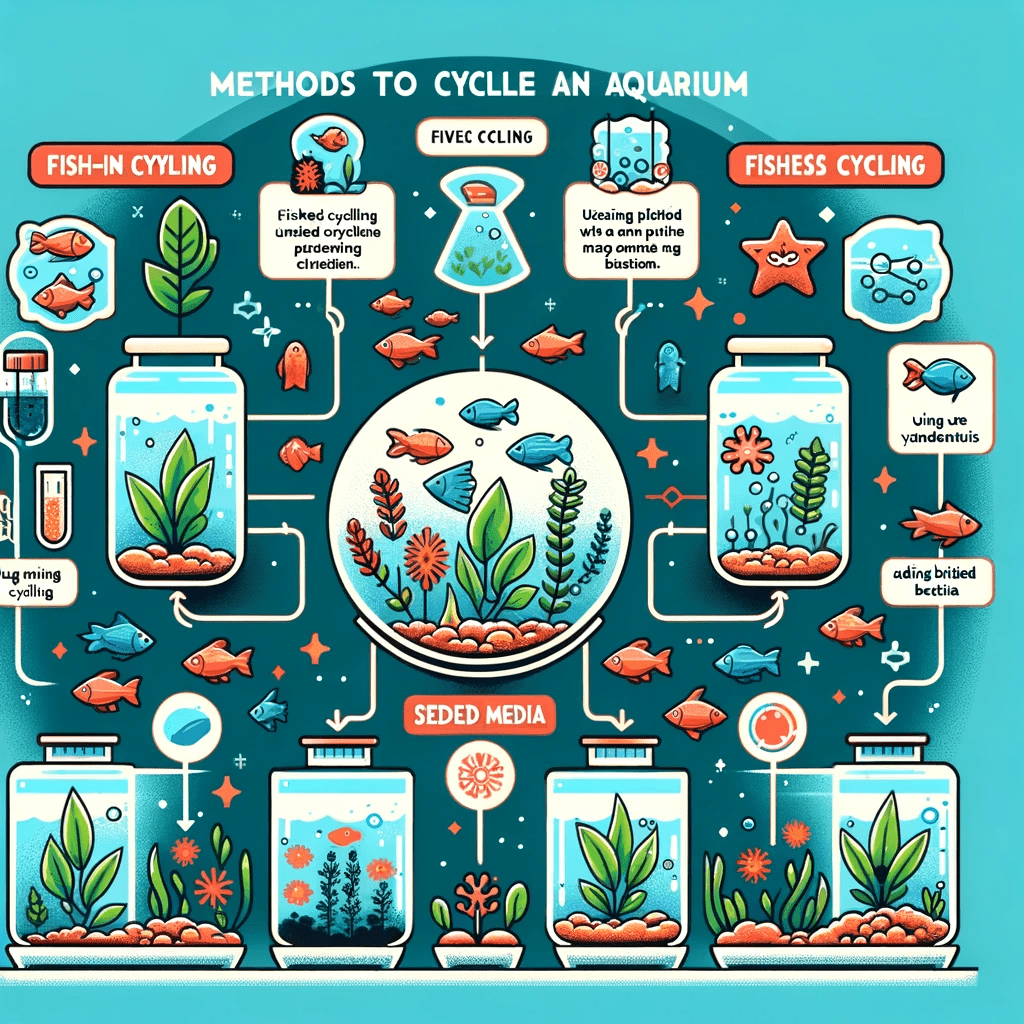The Various Methods to Cycle Your Aquarium for a Healthy Ecosystem
Exploring the Different Methods to Cycle Your Aquarium
Creating a healthy and stable environment in your aquarium is crucial for the well-being of your aquatic pets. The process of establishing beneficial bacteria in your tank, known as cycling, is essential for converting harmful ammonia into nitrites and then nitrates. This blog post explores the various methods you can use to cycle your aquarium, each with its own advantages and considerations.
Fish-In Cycling: The Traditional Approach
- How It Works: Fish-in cycling involves adding a few hardy fish to your tank from the start. These fish produce waste, which kickstarts the nitrogen cycle.
- Considerations: It’s vital to monitor water parameters closely and perform frequent water changes to protect the fish from harmful ammonia and nitrite levels. This method requires patience and careful management.
Fishless Cycling: The Humane Alternative
- How It Works: Fishless cycling eliminates the risk to fish by using ammonia sources like fish food, ammonia drops, or ammonium chloride to feed the bacteria.
- Benefits: This method is safer for fish, as they are introduced into a fully cycled tank, reducing stress and the risk of loss.
Using Live Plants: Nature’s Filter
- How It Works: Live plants absorb ammonia, nitrites, and nitrates, assisting with the cycling process and creating a more natural environment.
- Advantages: Besides aiding in cycling, plants provide shelter and reduce algae growth by competing for nutrients.
The Instant Cycle: Using Seeded Media
- How It Works: This method involves using filter media, gravel, or decorations from an established, healthy tank to introduce beneficial bacteria directly into your new aquarium.
- Speed: Seeded media can significantly accelerate the cycling process, making it a popular choice for experienced aquarists.
Cycling with Bottled Bacteria
- How It Works: Commercially available bottled bacteria can be added to new aquariums to introduce beneficial bacteria directly.
- Effectiveness: Results can vary, and it’s important to research and select a reputable brand for the best outcome.
Tips for Successful Aquarium Cycling
- Monitoring: Regardless of the method, regular testing of ammonia, nitrites, and nitrates is crucial to track the cycling progress.
- Patience: Cycling can take anywhere from a few weeks to a few months. Patience and diligent monitoring are key.
- Water Changes: Performing regular water changes can help manage toxin levels during the cycling process.
Conclusion: Laying the Foundation for a Healthy Aquarium
Cycling your aquarium is the first step toward creating a thriving aquatic environment. Whether you opt for a fish-in cycle, fishless cycling, or any other method, the goal is to establish a balanced, healthy ecosystem for your aquatic pets.
By understanding the different ways to cycle your aquarium, you can choose the best method for your setup and ensure a healthy start for your fish. Share this post with fellow aquarists to spread the knowledge of responsible aquarium cycling.


